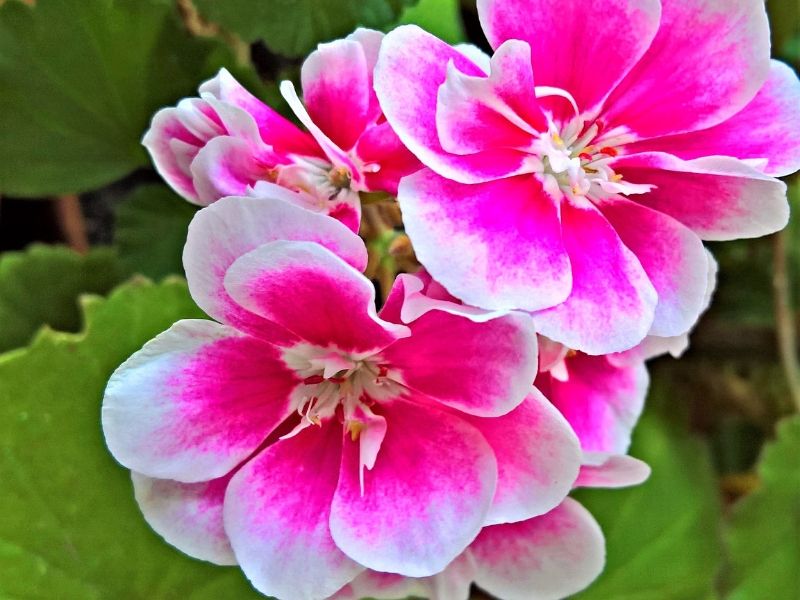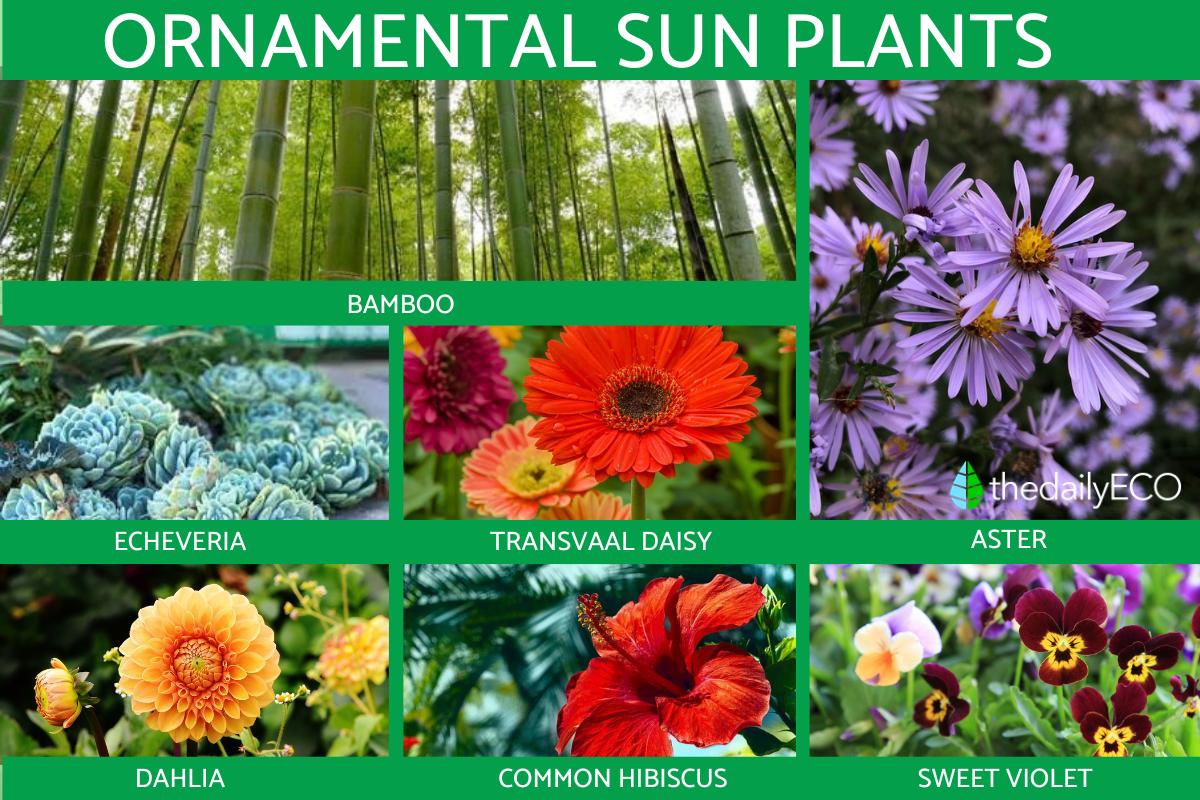The Enduring Allure of Ornamental Flowers: A Journey Through Beauty and Cultivation

For centuries, ornamental flowers have captivated humanity, adding splashes of color, fragrance, and elegance to our lives. More than just fleeting decorations, they are living works of art, carefully cultivated and celebrated for their aesthetic appeal. From the humble daisy to the majestic rose, ornamental flowers represent a rich tapestry of botanical diversity, cultural significance, and horticultural expertise. This article delves into the world of ornamental flowers, exploring their history, types, cultivation techniques, and the enduring reasons behind their popularity.
A Historical Bloom: Tracing the Roots of Ornamental Flowers
The fascination with ornamental flowers is deeply rooted in human history. Archaeological evidence suggests that ancient civilizations, including the Egyptians, Greeks, and Romans, cultivated flowers not only for medicinal and culinary purposes but also for their aesthetic value.
Ancient Egypt: Egyptians revered flowers, using them in religious ceremonies, burial rituals, and decorative arrangements. Lotus flowers, symbolizing rebirth and creation, were particularly prominent. Depictions of floral arrangements adorn tomb walls, showcasing a sophisticated understanding of floral design.
Ancient Greece and Rome: The Greeks and Romans associated flowers with their gods and goddesses, incorporating them into religious festivals and celebrations. Roses, violets, and lilies were particularly prized. The Romans, known for their elaborate gardens, imported exotic plants and flowers from across their vast empire, demonstrating a growing appreciation for botanical diversity.
The Middle Ages: During the Middle Ages, monasteries played a crucial role in preserving and cultivating ornamental plants. Monks maintained herb gardens and medicinal gardens, often incorporating flowering plants for their aesthetic appeal. The tradition of knot gardens, intricate geometric designs created with hedges and flowering plants, also emerged during this period.
The Renaissance: The Renaissance witnessed a renewed interest in classical art and literature, which extended to the world of horticulture. Renaissance gardens, characterized by formal designs, symmetry, and elaborate water features, showcased a wide variety of ornamental flowers. Tulips, introduced from Turkey, became a symbol of wealth and status, sparking a period of “Tulip Mania” in the Netherlands.

The Victorian Era: The Victorian era was a golden age for ornamental gardening. The burgeoning middle class embraced gardening as a leisure activity, leading to the development of new flower varieties and innovative gardening techniques. Formal bedding schemes, featuring masses of brightly colored flowers, became popular. Floral arrangements became a sophisticated form of communication, with specific flowers carrying symbolic meanings.

The Modern Era: Today, ornamental flowers continue to play a significant role in our lives. From public parks and botanical gardens to private gardens and floral arrangements, they bring beauty and joy to our surroundings. Modern breeding techniques have resulted in a vast array of new flower varieties, offering a wide range of colors, shapes, and sizes. Sustainable gardening practices are also gaining popularity, emphasizing the importance of environmentally friendly cultivation methods.

A Kaleidoscope of Colors: Exploring the Diversity of Ornamental Flowers
The world of ornamental flowers is incredibly diverse, encompassing a vast array of species, cultivars, and hybrids. They can be categorized based on several factors, including their growth habit, flowering season, and flower shape.
Annuals: Annuals are plants that complete their life cycle in one growing season, germinating, flowering, producing seeds, and dying all within a single year. They are prized for their vibrant colors and long blooming period. Popular annuals include petunias, marigolds, zinnias, and impatiens.
Biennials: Biennials complete their life cycle in two growing seasons. In the first year, they produce vegetative growth, and in the second year, they flower, produce seeds, and die. Examples of popular biennials include sweet William, foxglove, and Canterbury bells.
Perennials: Perennials are plants that live for more than two years. They typically flower each year, providing a recurring display of color. Perennials can be herbaceous, dying back to the ground in winter and re-emerging in spring, or woody, retaining their stems throughout the year. Popular perennials include roses, lilies, daylilies, and lavender.
Bulbs, Corms, and Tubers: These are specialized underground storage organs that allow plants to survive unfavorable conditions, such as drought or cold temperatures. They store nutrients that are used to fuel growth and flowering. Examples include tulips, daffodils, hyacinths (bulbs), gladioli (corms), and dahlias (tubers).
Beyond these broad categories, ornamental flowers can be further classified based on their flower shape, such as:
- Single flowers: Have a single row of petals, revealing the stamens and pistil.
- Double flowers: Have multiple rows of petals, often obscuring the stamens and pistil.
- Composite flowers: Have numerous small flowers clustered together to form a single flower head, such as sunflowers and daisies.
Cultivating Beauty: Essential Techniques for Growing Ornamental Flowers
Successful cultivation of ornamental flowers requires careful attention to several key factors, including:
Soil: Most ornamental flowers prefer well-drained soil that is rich in organic matter. Amend heavy clay soils with compost or other organic amendments to improve drainage and aeration.
Sunlight: The amount of sunlight required varies depending on the species. Most flowering plants need at least six hours of sunlight per day to thrive.
Watering: Water regularly, especially during dry periods. Avoid overwatering, which can lead to root rot. Water deeply and less frequently, rather than shallowly and often.
Fertilizing: Fertilize regularly with a balanced fertilizer to promote healthy growth and abundant flowering. Follow the instructions on the fertilizer label.
Pruning: Prune regularly to remove dead or faded flowers, promote bushier growth, and encourage further flowering.
Pest and Disease Control: Monitor plants regularly for signs of pests or diseases. Take appropriate action to control infestations or infections. Organic pest control methods, such as using insecticidal soap or neem oil, are often preferred.
The Enduring Appeal: Why We Love Ornamental Flowers
The popularity of ornamental flowers stems from a variety of factors:
Aesthetic Appeal: Their vibrant colors, delicate shapes, and intoxicating fragrances create a sense of beauty and joy.
Emotional Connection: Flowers evoke emotions and memories, often associated with special occasions and loved ones.
Therapeutic Benefits: Gardening and interacting with flowers can reduce stress, improve mood, and promote a sense of well-being.
Environmental Benefits: Flowers attract pollinators, such as bees and butterflies, contributing to biodiversity and ecosystem health.
Cultural Significance: Flowers play a significant role in many cultures, used in religious ceremonies, celebrations, and artistic expression.
In conclusion, ornamental flowers are more than just pretty decorations. They are a testament to the enduring human fascination with beauty, a reflection of our cultural heritage, and a source of joy and well-being. Whether you are a seasoned gardener or a novice enthusiast, cultivating and appreciating ornamental flowers can enrich your life in countless ways.
FAQ
Q: What are the easiest ornamental flowers to grow for beginners?
A: Some of the easiest ornamental flowers to grow for beginners include marigolds, zinnias, petunias, cosmos, and sunflowers. These plants are relatively low-maintenance and can tolerate a wide range of growing conditions.
Q: How do I choose the right ornamental flowers for my garden?
A: Consider your local climate, soil type, and the amount of sunlight your garden receives. Choose plants that are well-suited to these conditions. Also, think about the colors, shapes, and sizes of flowers that you find appealing.
Q: How often should I water my ornamental flowers?
A: The frequency of watering depends on the species, the weather, and the soil type. As a general rule, water deeply and less frequently, rather than shallowly and often. Check the soil moisture before watering.
Q: How do I prevent pests and diseases from damaging my ornamental flowers?
A: Monitor your plants regularly for signs of pests or diseases. Use organic pest control methods whenever possible. Ensure good air circulation and avoid overwatering.
Q: What is deadheading, and why is it important?
A: Deadheading is the process of removing dead or faded flowers from a plant. It encourages the plant to produce more flowers and prevents it from wasting energy on seed production.
Conclusion
Ornamental flowers are a timeless source of beauty and inspiration, enriching our lives and connecting us to the natural world. From their historical roots to their diverse forms and cultivation techniques, they offer a captivating journey for gardeners and flower enthusiasts alike. By understanding the principles of successful flower cultivation and embracing the joy of creating beautiful floral displays, we can all experience the enduring allure of ornamental flowers. Whether adorning a grand estate or brightening a humble windowsill, their presence reminds us of the beauty and wonder that surrounds us.


